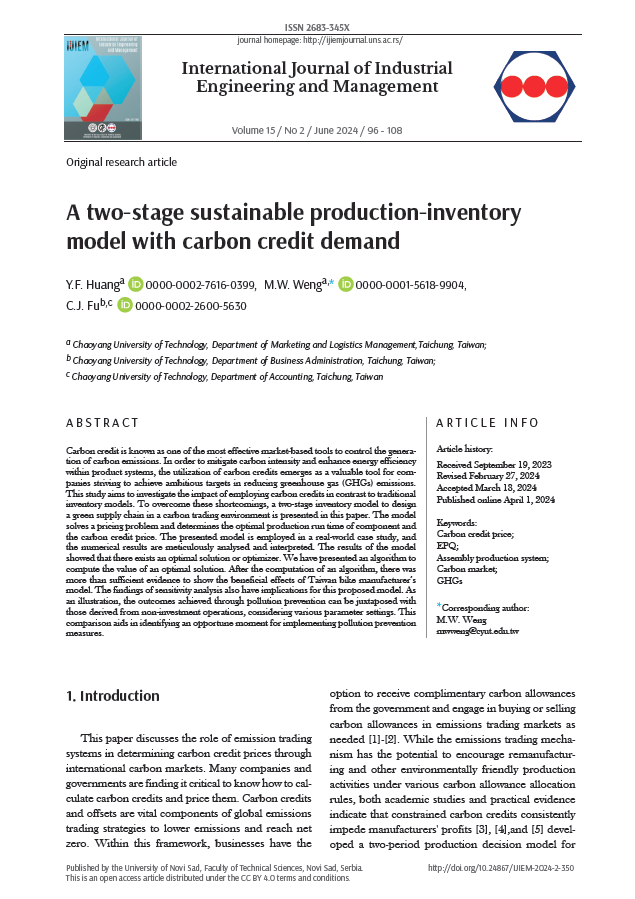A two-stage sustainable production-inventory model with carbon credit demand

Published 2024-06-11
abstract views: 822 // FULL TEXT ARTICLE (PDF): 15
Keywords
- Carbon credit price,
- EPQ,
- Assembly production system,
- Carbon market,
- GHGs
How to Cite
Copyright (c) 2024 International Journal of Industrial Engineering and Management

This work is licensed under a Creative Commons Attribution 4.0 International License.
Abstract
Carbon credit is known as one of the most effective market-based tools to control the generation of carbon emissions. In order to mitigate carbon intensity and enhance energy efficiency within product systems, the utilization of carbon credits emerges as a valuable tool for companies striving to achieve ambitious targets in reducing greenhouse gas (GHGs) emissions. This study aims to investigate the impact of employing carbon credits in contrast to traditional inventory models. To overcome these shortcomings, a two-stage inventory model to design a green supply chain in a carbon trading environment is presented in this paper. The model solves a pricing problem and determines the optimal production run time of component and the carbon credit price. The presented model is employed in a real-world case study, and the numerical results are meticulously analysed and interpreted. The results of the model showed that there exists an optimal solution or optimizer. We have presented an algorithm to compute the value of an optimal solution. After the computation of an algorithm, there was more than sufficient evidence to show the beneficial effects of Taiwan bike manufacturer’s model.
Article history: Received (September 19,2023); Revised (February 27,2023); Accepted (March 18,2023); Published online (April 1,2024)


